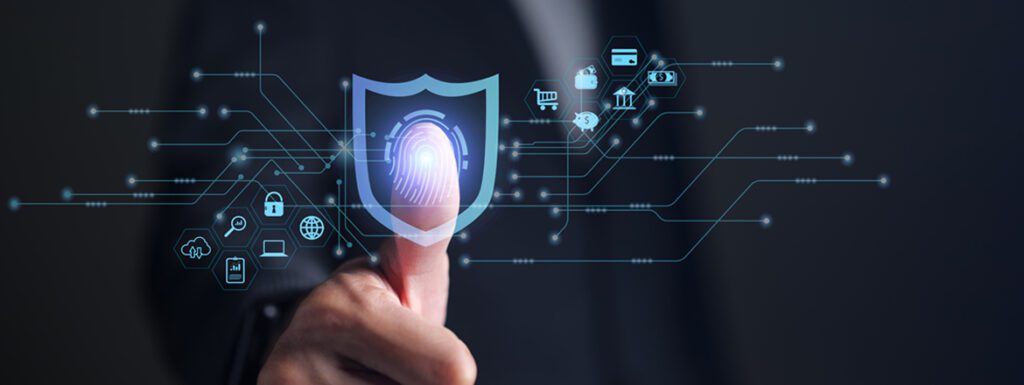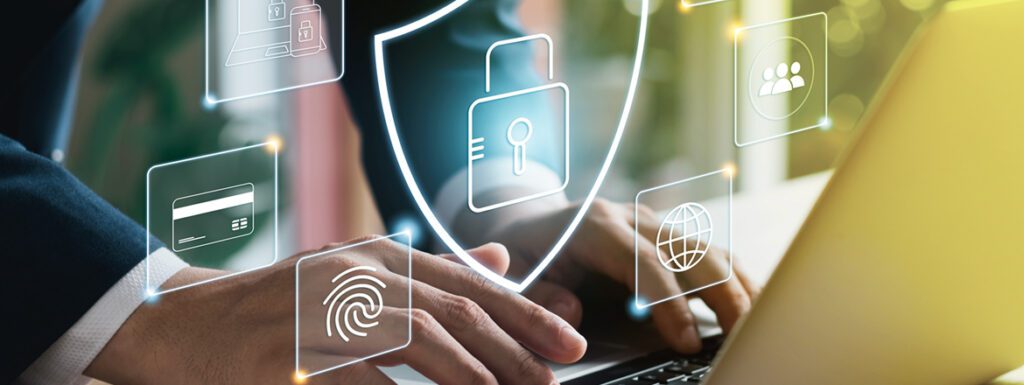Cyber security has become a critical issue for all organizations across the globe and the cyber threat landscape is only going to continue to grow. More sensitive information is being stored and shared online than ever before, which reiterates the importance for the correct levels of cyber security technologies being implemented within organizations.
However, it’s important to consider that, with the rapid expansion of the industry, there is the likelihood that everything could change very quickly. Therefore, it’s important to try and stay ahead of the curve and predict the next steps of the heroes and villains in cyber security, which this article will help you to do.
New and Emerging Cyber Security Trends
There are a number of emerging cyber security trends that all organizations should be monitoring to ensure they’re prepared for future cyber threats. We have compiled a list for you below:
AI and Machine Learning Technologies
As expected, one of largest trends in the future of cybersecurity (and the entire digital space) is the use of artificial intelligence (AI) and machine learning (ML) technologies.
AI and ML algorithms enable organizations to automate data analysis and detect patterns and anomalies at a faster rate than when using traditional procedures. This allows organizations to identify and respond to cyber-attacks sooner, helping to reduce damage and minimizing the impact of a cyber attack. Additionally, AI and ML technologies can be used to automate a number of tasks, helping to reduce workloads and reduce organizational costs.
Cloud Computing
Cloud computing is a growing trend in cyber security due to the effective mitigation of cyber risk and improvements in software deployment and scaling of operations.
Cloud computing cuts costs by removing the need for hardware or software maintenance, as this will be provided by the provider of the cloud-based service. This can help to lower operational costs and free up internal resources, which can then be applied to other initiatives. Additionally, the use of cloud-based software can help to lower software deployment times, as organizations can build and launch new software and programs without needing to spend time building the infrastructure needed to support them.
Furthermore, cloud computing also enables organizations to access specialized expertise through third-party providers, such as data scientists and AI experts. For example, a third-party AI expert could be used by an organization to learn how AI could be integrated into their DevOps processes.
The Growing Use of the Internet-of-Things (IoT)
The use of IoT technology is continuing to grow, as people and companies are utilizing more IoT devices. According to the latest statistics, there are currently around 15.1 billion IoT connected devices and it is predicted we could see this almost double to 29.4 billion by the year 2025.
Whilst this increases digital collaboration opportunities, IoT devices continue to have weak safety controls. Many organizations already struggle with the implementation of adequate safety measures, so an increase of devices will only further the difficulty of keeping these devices protected.
Blockchain Technologies
Blockchain is a decentralized and distributed ledger technology that records transactions across multiple computers in a way that ensures the security and transparency of data. Decentralization makes it much more difficult for cyber criminals to compromise the network, which is why it’s becoming an increasingly popular choice for applications that require high levels of security. Blockchain networks have been predominantly adopted within industries such as government, healthcare, finance and real estate where the risk of data breaches and fraud can have serious consequences.
Zero Trust Security Models
Zero Trust models enhance security by never assuming trust by default. Every user, device, and application is continuously authenticated and authorized, reducing the potential for cyber-attacks and limiting the impact of potential breaches on critical infrastructure.
A great example of a zero-trust security model is a Zero-knowledge Proof (ZKP). ZKP algorithms enable the transfer of information between parties without revealing passwords or sensitive data, eliminating many of the security weaknesses surrounding password enabled authentication protocols. To understand how ZKP’s work, there are some great examples here.
Additionally, insider threats, whether intentional or accidental, will always pose security challenges to an organization.
Organizations can maintain project collaboration without exposing employees to sensitive information by using Multi-Party Computation (MPC). MPC is a cryptographic technique that enables multiple parties to evaluate functions while keeping those inputs private. It ensures that no party learns more information than they should.
For example, if multiple organizations wanted to train machine learning models using their combined data without sharing the data itself, MPC can be employed as it would allow them to collectively train models while keeping their data private.
Remote Work Becomes Permanent
The COVID-19 pandemic has significantly changed the way many employees work. Working from home began as a concept that we believed would last for a matter of weeks, but quickly turned into a long-term option for many. Some organizations have actually ended their office leases to move to a ‘work from anywhere’ policy and the majority of organizations have at least continued to work from anywhere part time.
Remote workers will often use either their personal or public internet to access company resources, which can be less secure than on-premises networks. Additionally, remote devices such as laptops and smartphones are more likely to be used when working remotely, which are more vulnerable to malware, ransomware, and other cyber threats. Therefore, organizations need to ensure the correct policies, training and processes are implemented for effective security management of remote workers.
Quantum Computing
Quantum computing has the potential to significantly impact the future of cybersecurity, both in terms of threats and defensive capabilities. Most of the existing encryption algorithms used in cyber security rely on the fact that advanced mathematical problems are difficult to solve with current computers. However, quantum computers have the ability to solve these problems at such a greater speed that it could potentially render existing encryption methods obsolete.
Quantum computing has both positives and negatives. On one hand, quantum computing has the potential to break existing encryption, which would create a significant threat to cybersecurity. However, quantum computers could also be used to develop new and more secure forms of encryption, offering new levels of data protection that are likely to be more secure than previous forms.
Future Cyber Security Threats and Concerns to Watch Out For
As cyber security continues to progress and new threats and trends are uncovered, it is inevitable that there will also be progression in the dark side of cyber security. However, by identifying emerging threats, organizations can start to prepare their security and workforces against the new wave of cyber-attacks.
Double-Edged Sword of AI and ML Technologies
Similarly to quantum computing, artificial intelligence can be leveraged by both sides in cyber security. AI technologies have been applied across the board in cyber security, but hackers are also leveraging them to develop things such as intelligent, automated malware programs and for credential stuffing, which takes advantage of people who use the same passwords for multiple logins.
Artificial intelligence is truly a double-edged sword that can be used as a solution or as a weapon, but the correct levels of AI corporate training can help to workforces to understand, identify and mitigate the cyber threats that are surfacing against organizations.
Data Privacy Regulations
With several data privacy policies coming into place, such as the General Data Privacy Regulation (GDPR) and the Personal Information Protection and Electronic Documents Act (PIPEDA), organizations are becoming increasingly likely to face fines and harsher sanctions, should confidential data become exposed. As expected, cyber criminals are exploiting this to ensure a higher ransom payout, as organizations will still see paying this as more appealing than paying the regulatory penalties they’ll receive if sensitive data is released.
Worsening Crisis in Trust Online
As much as AI and ML technologies are improving the world of cyber security, their advance is also making it increasingly difficult to distinguish between humans and machines online. This is reducing trust between individuals online and may also lead to a regression in the use of technology, with people shifting their activities back offline and discussing matters in person. In a world of increasingly sophisticated synthetic media through the use of DeepFakes and other examples of AI-based cyberattacks, the cyber security industry will need to focus its efforts more onto rebuilding this trust through improved identity verification methods.
Polymorphic Malware
Polymorphic malware is becoming increasingly common. It’s a type of malicious malware that constantly changes its code or appearance while maintaining its core functionality. The primary purpose of polymorphic malware is to better avoid detection by traditional antivirus and security software, which typically rely on recognizing known patterns or types of malware.
Difficulty Prosecuting Cybercrime
Although a growing number of countries are prioritizing cyber security and laws surrounding the prosecution of cyber criminals, cyber-crimes are often transnational, as attackers will operate from one country and target victims in another. This can make it particularly challenging to coordinate investigations and extradition proceedings, due to the variances in jurisdiction.
Additionally, cyber criminals can hide behind various layers of anonymity, such as using virtual private networks (VPNs), encryption and evasion tactics to make it extremely difficult for law enforcement agencies to trace their real identities.
5G Networks
5G technology is another double-edged sword within cyber security, as the increased speed and connectivity introduces stronger levels of encryption and overall security, but also creates new security risks, as cyber criminals have the potential to launch more sophisticated cyber-attacks.
Moreover, 5G networks use software-defined networking (SDN) which makes them more vulnerable to attacks that can take advantage of software vulnerabilities. To reduce this risk, organizations should prioritize the implementation of strong security measures against encryption, access controls, and intrusion detection systems.
Cyber Threats That Will Remain an Issue Within the Cybersecurity Industry
Although the cyber security industry continues to progress at a rapid pace, there are a few core issues that will continue to pose a significant threat within the industry. Aside from monitoring upcoming cyber threats, organizations should remain vigilant against existing threats, as these still have the potential to cause significant issues.
Data Breaches
Data breaches will continue to be a high-level threat within the cyber security industry for two reasons: the value of sensitive information and human error.
Although financial gain is primarily the end goal for most cyber criminals, it’s often the data itself that creates the value, meaning that organizations of all kinds and sizes are being targeted. Additionally, with the increased security measures in cyber security, the value of data is skyrocketing, leading cyber criminals to not steal data for ransom demands, but also to sell it to other cyber criminals.
Data breaches will remain an issue within the cyber security industry, due to human error. According to Zippia’s Crucial Cyber Security Statistics of 2023, 95% of cyber-attacks are due to human error. This includes all kinds of accidental moments, from something like sending a sensitive email to the wrong person to falling victim to phishing or whaling emails.
Remote Work
With permanent and hybrid working models becoming the new normal, the cyber security risks associated with this will remain prevalent. Cyber criminals will look for vulnerable or misconfigured systems that connect to the internet, which is obviously a much easier task when employees are working off of home or public networks.
The Cyber Security Talent Gap
The cyber security talent gap has been prevalent within the industry for some time now, and it’s not going away any time soon. A 2022 study on the cyber security workforce by (ISC)2 found that the global cybersecurity talent gap grew by 26.2% in 2022 compared to 2021 and that there is still a worldwide gap of 3.4 million cyber security workers.
With the demand for cybersecurity experts continuing to outpace the supply of cybersecurity professionals and the number of cyber criminals continuing to grow, cyber security is becoming increasingly concerning for organizations everywhere.
6 Ways to Prepare your Organization for the Future of Cyber Security
So, you now have established an understanding of the current and future cyber security threats, but how can you start to implement the measures required?
By addressing these six areas, your organization will be better prepared to navigate the evolving landscape of cyber security and adapt to the emerging threats. Taking a proactive approach to cybersecurity risk will help to further safeguard your organization’s data, its systems and reputation against the ever-evolving cyber risks.
Increase the Frequency of Top-Level Discussions Surrounding Cyber Issues
- Schedule regular meetings at the executive and C-suite levels to have on-going discussions regarding cyber security strategy
- Elevate cybersecurity to a strategic business concern, not just an IT issue
- Encourage open communication between cyber security teams and leadership to ensure a clear understanding of the importance of cyber security and how it aligns with organizational objectives
Take Advantage of Automation
- Invest in security automation tools and technologies to streamline routine tasks.
- Use automation for threat detection, incident response, and for the testing and deployment of new software
- Ensure your workforce have the correct training on AI and machine learning for the proactive identification of cyber threats
Adopt Zero-Trust Principles
- Evaluate and redesign your network and access policies based on the Zero Trust or Zero-knowledge proof models
- Implement continuous user authentication and authorization, regardless of their location or device
Improve Response Capabilities
- Develop an incident response plan that is regularly tested and updated
- Establish an incident response team that has clear roles and responsibilities
Ensure Remote Access is Secure
- Implement robust remote access solutions with strong authentication, encryption, and access controls
- Educate employees on secure remote work practices, such as using VPNs and secure Wi-Fi networks
- Regularly assess the security of remote access tools and infrastructure
Implement Cyber Security Training for Employees
- Develop or find a comprehensive cyber security awareness training program that is suitable for your employees
- Make sure your cyber security training is an ongoing process, with regular updates, reminders and internal discussions
Prepare your Organization for Tomorrow’s Cyber Security Threats with Elev8
Understanding the future of cyber security is one thing, but effectively preparing your organization for it requires an effective digital transformation plan. Elev8 provides effective cyber security training to help organizations protect their data against the ever-evolving cyber-crime industry. We help our clients by creating cyber security processes that are shaped to their individual needs and challenges. If you’re interested in future-proofing your organization’s cyber security, get in touch with a member of our expert team by clicking here.




